Traveling to Vietnam can be an exhilarating experience, filled with stunning landscapes, rich culture, and delicious cuisine. However, one of the most pressing concerns for many travelers is staying connected, especially if you rely on your devices for navigation, communication, or sharing your adventures on social media. To avoid incurring hefty roaming fees while abroad, it’s essential to understand your options for getting internet access in Vietnam. In this blog, we will explore various methods to stay connected, including using free Wi-Fi, purchasing local SIM cards, and utilizing eSIM technology.
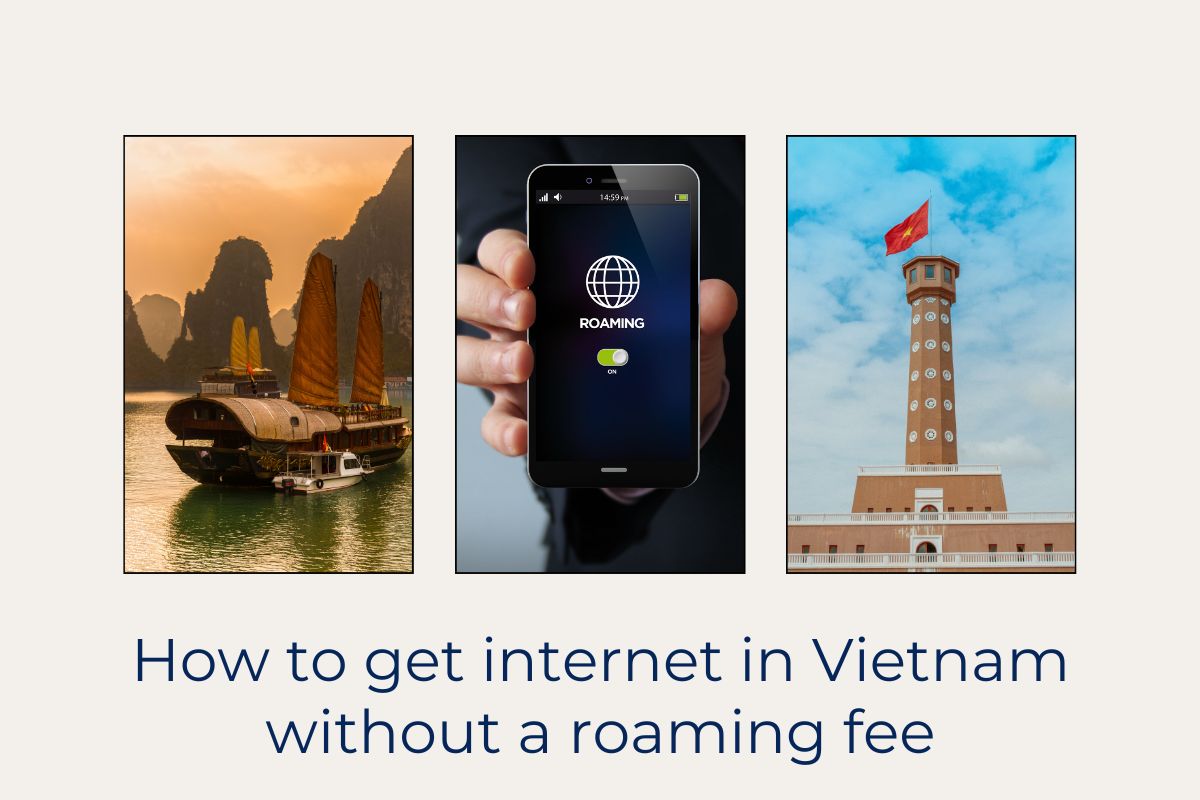
Mobile Internet in Vietnam – Coverage & Speed
When traveling to Vietnam, one of the most essential things to do is explore the internet status in Vietnam, especially the mobile internet speed and coverage. Here is the breakdown to keep in mind:
-
Vietnam Mobile Internet Coverage
In Vietnam, more than 99% of people are connected to a vast mobile broadband network.
Viettel, Vinaphone, and Mobifone are Vietnam’s three main telecom providers. For the majority of popular locations, including Hanoi, Ho Chi Minh City, Da Nang, Hoi An, Sapa, and Phu Quoc Island, all three have strong 4G/LTE service. In remote or rural locations, there might be occasional coverage gaps, nevertheless. However, most towns and tourist destinations provide fast, dependable mobile internet from one or more carriers.
-
-
Viettel: Viettel is Vietnam’s largest telecom company with an extensive 4G/LTE and 3G network nationwide. It covers over 95% of the population across nearly all major population centers and provinces.
-
Vinaphone: Approximately 85% of the population is covered by Vinaphone’s mobile network, which has a strong 4G presence in traffic hotspots and major economic districts. In cities like Hanoi and Ho Chi Minh City, its LTE service may provide internet speeds of up to 150 Mbps over the widely used 900 and 1800MHz bands.
-
Mobifone: Similar to Vinaphone and Viettel, Mobifone offers a countrywide service zone with over 90% coverage for 3G and roughly 70–75% coverage for 4G. It has made investments to spread LTE on 1800MHz so that most cities and province capitals can get high-speed 4G.
-
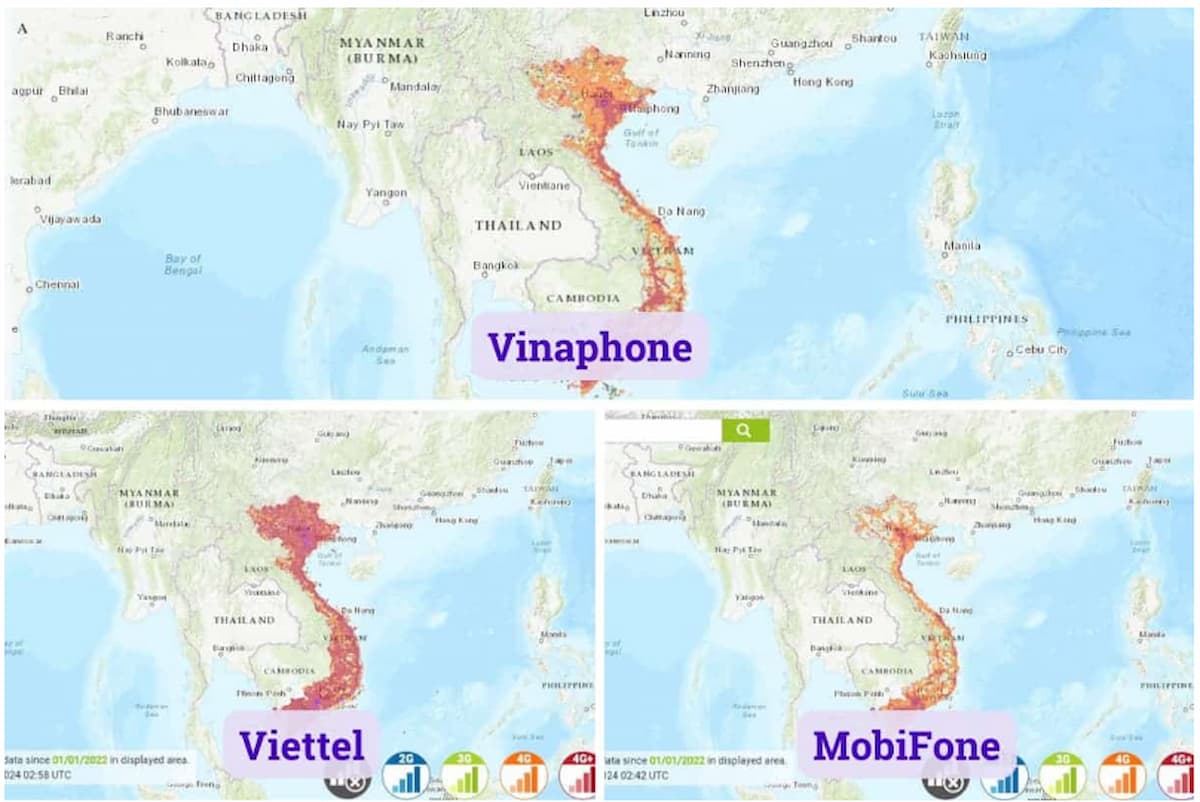
Mobile coverage in Vietnam
-
Vietnam Mobile Internet Speed
Regarding the mobile internet speed in Vietnam, Vietnam ranks 51st in the world for median mobile internet speeds. The average reported download speed in Vietnam was 49.12 Mbps, while the average upload speed was 20.08 Mbps.
In specific:
-
City ranking: Major cities are typically ranked highest. For downloads, Ho Chi Minh City usually claims the quickest speeds, with an average of about 60 Mbps. Hanoi’s internet speeds are very good, averaging 50 Mbps. With speeds in the 40–50 Mbps range, more populated cities and provinces, including Binh Duong, Hai Phong, and Da Nang, are catching up.
-
Compare to countries in the area: In comparison to neighboring countries, Vietnam’s mobile internet ranks favorably. Thailand ranks 60th overall with average speeds of 42 Mbps. Malaysia sits in 38th place with speeds of around 46 Mbps. Only Singapore and Hong Kong have significantly faster networks among Southeast Asian nations.
In general, the mobile internet in Vietnam is fast and stable, making it convenient for tourists to keep connected while traveling to this country.
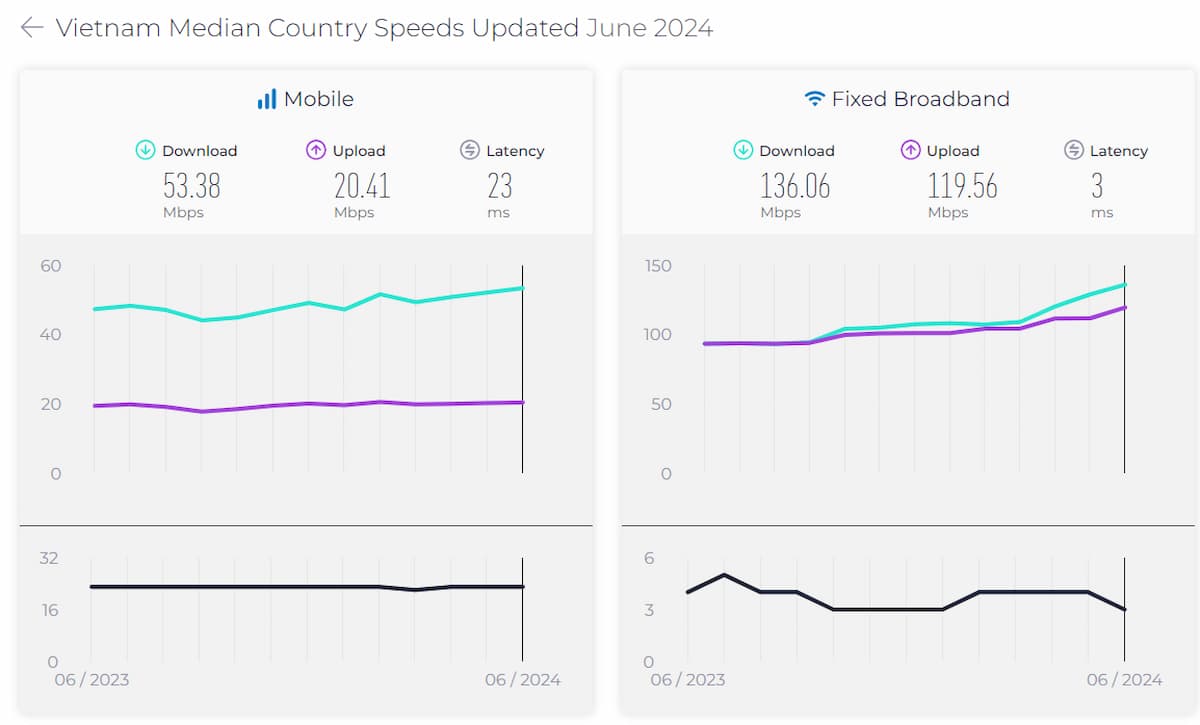
Vietnam Medican Country Speeds
How many ways to access the internet in Vietnam?
After discussing Vietnam’s mobile internet status, are you wondering how many connectivity options to access the internet in Vietnam?
1. Using Free Wi-Fi
One of the easiest and most cost-effective ways to stay connected while in Vietnam is by taking advantage of free Wi-Fi. Many establishments, including cafés, restaurants, hotels, and public spaces, offer complimentary internet access. This section will explore how to locate free Wi-Fi and make the most of it during your travels in Vietnam.
Major cities like Ho Chi Minh City and Hanoi have numerous hotspots, particularly in tourist-heavy areas.
You’ll often find free Wi-Fi available at:
-
Cafés: Popular chains like Starbucks, Highlands Coffee, and various local coffee shops offer free Wi-Fi, allowing you to work or socialize while enjoying a drink.
-
Restaurants: Many eateries provide free Wi-Fi to attract customers. Just check with the staff for the password, and you’re good to go.
-
Shopping Malls: Large shopping centers usually have free Wi-Fi networks for shoppers, making it easy to browse online for deals or reviews.
Additionally, apps such as WiFi Map can help you locate nearby free Wi-Fi hotspots through user-generated content, which can be incredibly useful when you’re not familiar with the area.
While free Wi-Fi has its perks, there are inherent limitations to consider. The speed and reliability of such networks can vary significantly depending on location and user load. Additionally, some establishments may have time limits or require you to purchase to gain access.
Moreover, relying solely on free Wi-Fi might limit your ability to navigate off the beaten path, especially in rural areas or smaller towns where such connectivity may not be readily available. Thus, while it’s a great option for urban exploration, it’s advisable to have a backup plan for more remote destinations.
2. Stay Connected in Vietnam: Buying a Local SIM Card
If you prefer a more reliable internet connection throughout your travels, purchasing a local SIM card is an excellent option. This section will discuss how to buy a local SIM card in Vietnam, the types available, and tips for choosing the right plan to fit your needs.
Where to buy Vietnamese local SIM cards
Obtaining a local SIM card is relatively straightforward in Vietnam. You can purchase one upon arrival at the airport, convenience stores, or authorized retailers throughout major cities.
The best places to buy a SIM card include:
-
Airports: Upon landing at major airports like Tan Son Nhat International Airport in Ho Chi Minh City or Noi Bai International Airport in Hanoi, you’ll find kiosks from various telecom providers offering SIM cards tailored for tourists.
-
Mobile Stores: Look for authorized stores of popular Vietnamese telecom operators such as Viettel, Mobifone, and Vinaphone. Staff usually speak basic English and can assist in selecting the right package.
-
Convenience Stores: Many convenience store chains, such as Circle K and Ministop, also sell SIM cards. These stores are ubiquitous and often open 24/7, providing flexibility in purchasing a SIM card when you need it.
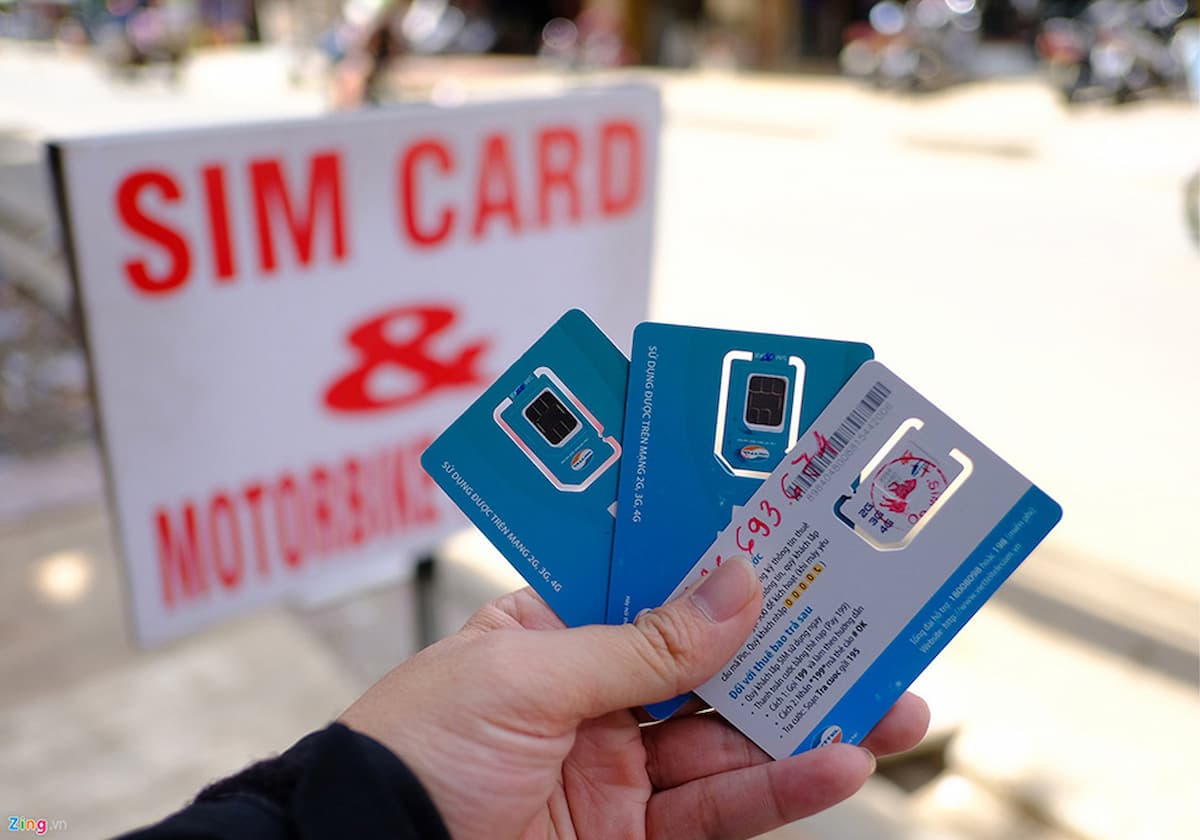
Types of SIM Cards and Data Plans
Vietnam’s telecommunication market is competitive, which means you have various options for data plans tailored to different usage levels. Most local providers offer prepaid SIM cards meant specifically for tourists, complete with generous data packages and affordable local calls.
When selecting a SIM card, consider:
-
Data Allowance: Depending on your usage habits, choose a plan with an adequate data allowance. Options can range from a few gigabytes to unlimited data for a set period.
-
Validity Period: Check how long the SIM card remains active after purchase. Most tourist SIM cards last between 7 to 30 days, making them suitable for short trips.
-
Coverage: Ensure the provider you choose has robust coverage in the regions you plan to visit. Viettel tends to offer the most extensive network, especially in rural areas.
3. Vietnam eSIM – Alternative Option for Visitors
As technology advances, so do the options for staying connected while traveling. One such innovation is the eSIM, or embedded SIM, a digital version of a traditional SIM card. This section explores the benefits of eSIM technology for visitors in Vietnam, along with how to acquire and use it effectively.
Understanding eSIM Technology
An eSIM is built directly into your device, eliminating the need for a physical SIM card. Instead of swapping out cards, you can download a data plan from a mobile operator directly to your device. Major smartphone brands now support eSIM technology, including Apple, Google, and Samsung.
This modern solution has revolutionized how travelers obtain cellular service abroad. By offering immediate access to local data plans, eSIMs provide significant convenience and flexibility.
How to Obtain an eSIM in Vietnam
Acquiring an eSIM in Vietnam is straightforward for those whose devices support the technology. Here’s how to get started:
-
Check Compatibility: Before anything else, ensure that your smartphone supports eSIM functionality. You can usually find this information in your device’s specifications.
-
Choose a Provider: Various Vietnamese telecom companies, such as Viettel and Mobifone, offer eSIM services. Research their plans and select one that suits your needs.
-
Download the eSIM Profile: After selecting a provider, follow their instructions for downloading the eSIM profile onto your device. This process typically involves scanning a QR code provided by the carrier.
Benefits of Using eSIM
Utilizing an eSIM during your travels presents several advantages:
-
Instant Connectivity: With an eSIM, you can activate your mobile plan instantly upon arrival, bypassing the hassle of visiting a store or kiosk.
-
Multiple Plans on One Device: An eSIM allows you to switch between different mobile plans seamlessly. This flexibility is beneficial for frequent travelers moving between countries.
-
Environmental Impact: By foregoing physical SIM cards, you contribute to reducing plastic waste, making eSIMs a more environmentally conscious choice for tech-savvy travelers.
4. Best eSIM for Vietnam – where to buy
-
Buying directly from Vietnamese mobile operators: Major Telecoms like Viettel or Vinaphone do offer prepaid eSIM plans with data, rates range from $4 for 1GB per day
| Operator | Package | Price (VND) | Price (USD) | Data/Features | Code |
|
Viettel
|
SD135 | 135k/month | 5.85 | 5GB/day | |
| MXH100 | 100k/month | 4.3 | 1GB/day, free social media data | MXH100 DY to 9123 | |
| MXH120 | 120k/month | 5.16 | 1GB/day, free calls <10min, 30min off-net calls, free social media data | MXH120 DY to 9123 | |
| SD120 | 120k/month | 5.16 | 2GB/day | SD120 DY to 9123 | |
|
Vinaphone
|
BIG90 | 90k/month | 3.86 | 1GB/day, speed reduced after | BIG90 to 888 |
| MAX200 | 200k/month | 8.6 | 2GB/day, reduced speed after | MAX200 to 888 | |
| BIG120 | 120k/month | 5.16 | 2GB/day, speed reduced after | BIG120 to 888 | |
| D60G | 120k/month | 5.16 | 4GB/day, 1500 min free on-net calls, 50min off-net calls | DK D60G to 888 | |
|
Mobifone
|
ESIM1 | 90k | 3.86 | 6GB/day | BV ESIM1 to 9084 |
| ESIM6 | 540k | 23.2 | 6GB/day | BV ESIM6 to 9084 | |
| ESIM12 | 1.08M | 46.4 | 6GB/day | BV ESIM12 to 9084 |
For most travelers, signing up directly through Vietnam mobile carriers isn’t the simplest eSIM approach. More flexible and tourist-friendly alternatives are available.
-
Buying Vietnam eSIM from an eSIM provider
As Vietnam’s #1 eSIM provider, vietnamesim.com offers diverse eSIM plans for any traveling goals at a reasonable price. Consider the plans below to get the best eSIM for your Vietnam experience.
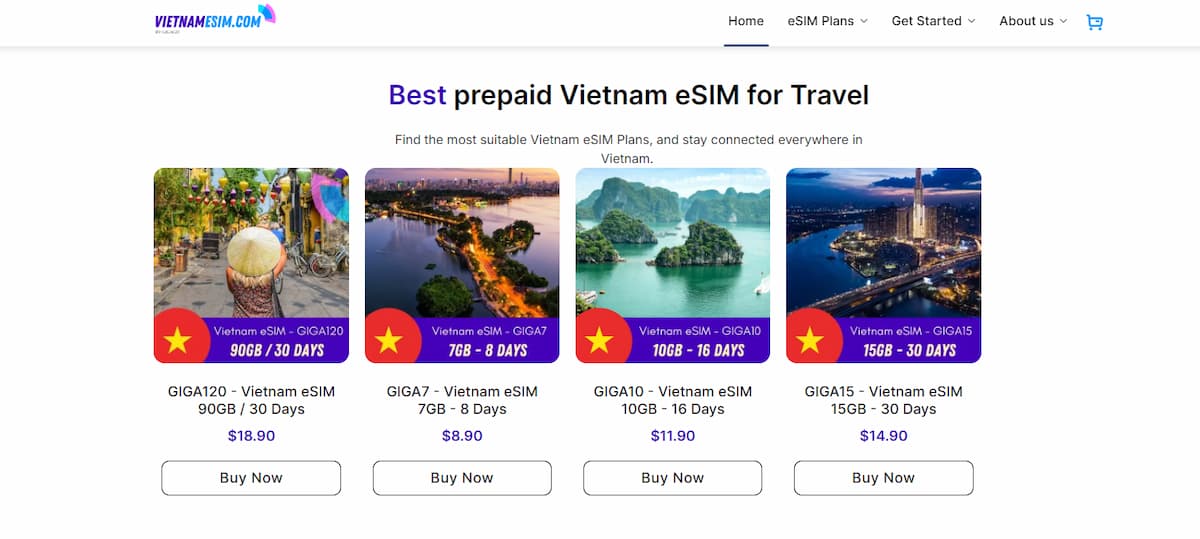
Conclusion
Staying connected while traveling in Vietnam doesn’t have to be expensive or complicated. Whether you use free Wi-Fi, purchase a local SIM card, or opt for innovative eSIM technology, each method has its merits and drawbacks. Carefully considering your travel habits and requirements allows you to select the best option for seamless internet access!